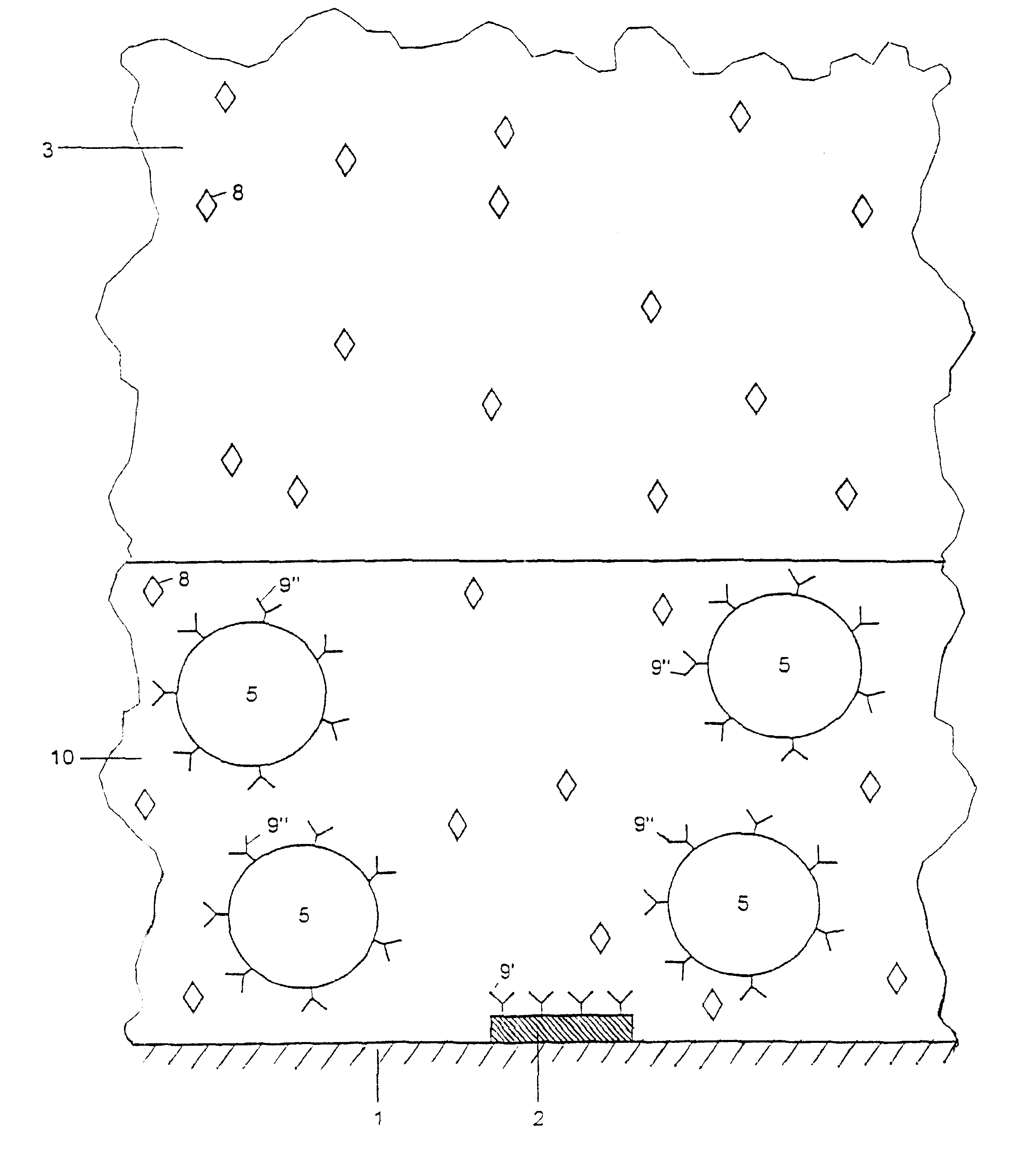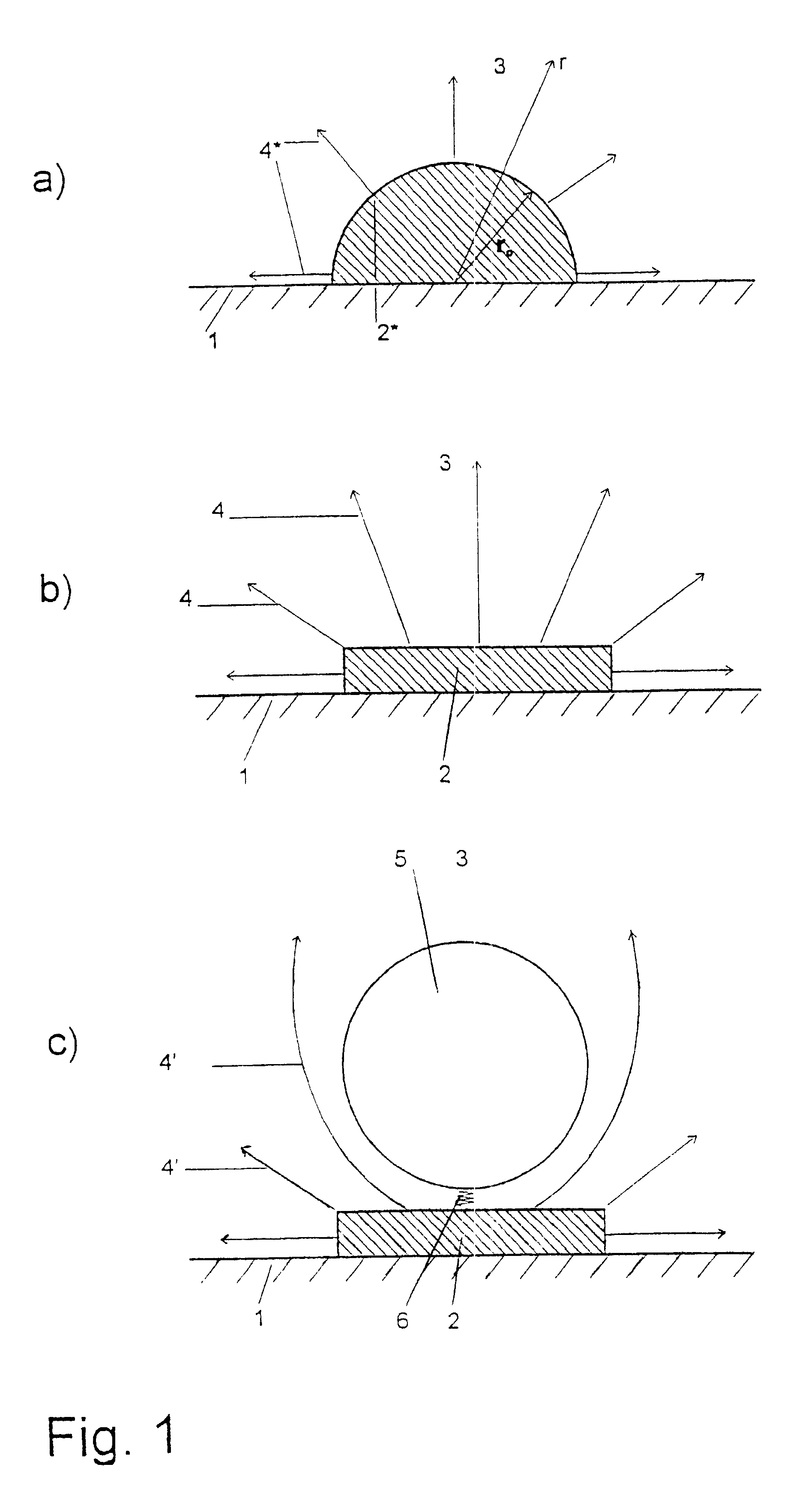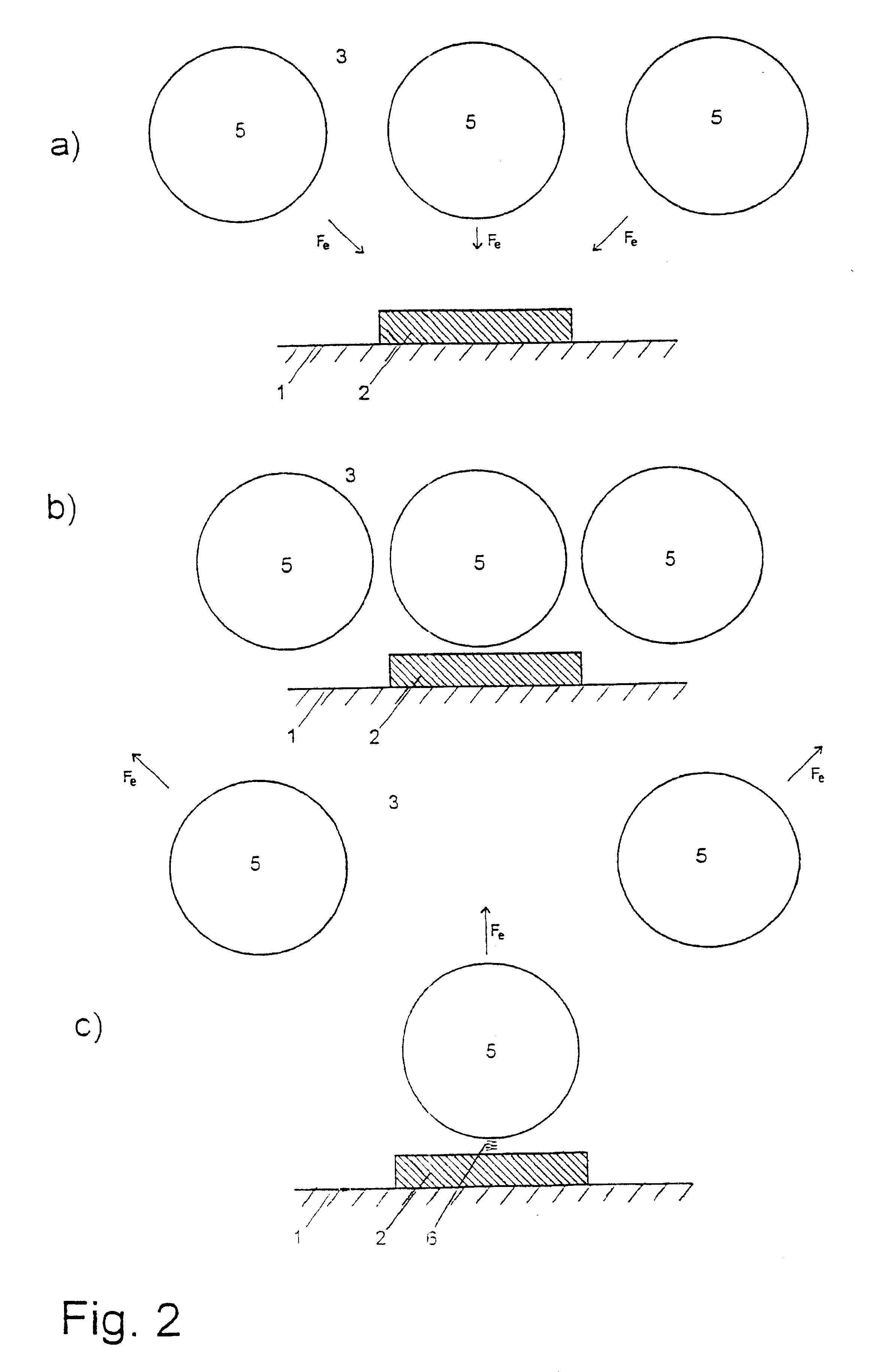Device and method for detecting analytes
- Summary
- Abstract
- Description
- Claims
- Application Information
AI Technical Summary
Benefits of technology
Problems solved by technology
Method used
Image
Examples
Embodiment Construction
The mechanism of binding detection is described in more detail in FIG. 1.
FIG. 1a) shows the surroundings of a microelectrode. Here 1 is an insulating support, on which a spherical microelectrode 2* is arranged. An electric voltage is applied between this microelectrode 2* and a counter-electrode not shown. Both electrodes are surrounded by a liquid measuring medium 3. Electrical field lines 4 emerge from the live microelectrode 2*. FIGS. 1b) and 1c) show the mechanism of binding detection. The planar microelectrode 2 has square shape having an edge length of 3 .mu.m. The electrode has been produced with the aid of known thin-layer processes on an insulating support 1 which consists of glass. The material of the marker particle is, for example SiO.sub.2, and the diameter is 2 .mu.m.
In aqueous measuring medium, the specific conductivity is described as follows: ##EQU1##
Herein z.sub.i is the charge number, .mu. is the mobility and C the concentration of the ions. F represents the Farad...
PUM
| Property | Measurement | Unit |
|---|---|---|
| Diameter | aaaaa | aaaaa |
| Magnetic field | aaaaa | aaaaa |
| Current | aaaaa | aaaaa |
Abstract
Description
Claims
Application Information
 Login to View More
Login to View More - R&D
- Intellectual Property
- Life Sciences
- Materials
- Tech Scout
- Unparalleled Data Quality
- Higher Quality Content
- 60% Fewer Hallucinations
Browse by: Latest US Patents, China's latest patents, Technical Efficacy Thesaurus, Application Domain, Technology Topic, Popular Technical Reports.
© 2025 PatSnap. All rights reserved.Legal|Privacy policy|Modern Slavery Act Transparency Statement|Sitemap|About US| Contact US: help@patsnap.com



